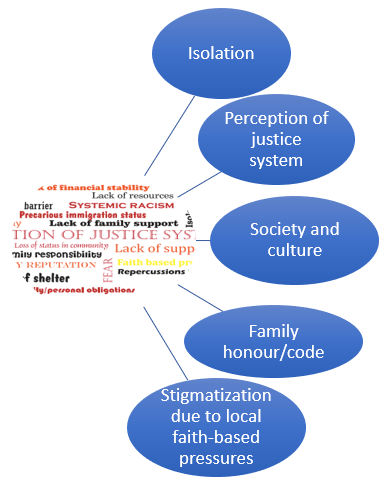Module 5 addresses the situation of vulnerability of smuggled migrants. The vulnerable situation of victims of trafficking is analysed in Modules 6 and 7. It is important to note that the level of vulnerability of smuggled migrants and trafficked persons is often different. To start with, as explained above, trafficked persons have by definition been subject to deception or coercion, which is not necessarily the case for smuggled migrants. Further, victims of trafficking are subject, or intended to be subjected, to exploitation. This is not a requisite of the definition of smuggling of migrants.
Nonetheless, several factors commonly increase the vulnerability of smuggled migrants. First, they are often mistrustful of authorities in countries of transit and destination, largely due to fears of apprehension and deportation, which makes them less likely to seek help where they are abused or placed in situations of danger by smugglers. Second, smuggled migrants may experience intimidation and threats by smugglers. Third, smuggled migrants may feel indebted to smugglers for their assistance and thus obligated to not report abusive conduct. Fourth, societal structures and cultural factors (such as fear of being seen as a failure by family if not succeeding abroad) may prevent smuggled migrants from leaving situations of smuggling, even where their lives or safety is endangered. Fifth, smuggled migrants often experience isolation outside their countries of origin, due to language difficulties, a lack of relatives, friends or acquaintances, geographical disorientation and restrictions on their freedom of movement because of their irregular status. Finally, smuggled migrants may also be placed in situations of debt bondage by smugglers (where smuggling fees cannot be otherwise paid).
All these factors make smuggled migrants prone to human trafficking. By and large, they also generally apply to persons in situations of trafficking, significantly contributing to the empowerment of perpetrators, as well as delays in detection of victims and investigation and prosecution of their traffickers.

Vulnerability is both a cause and consequence of smuggling of migrants and trafficking in persons. It is a key factor that enables and perpetuates each of these crimes. This is not to say that all smuggled migrants will necessarily be equally vulnerable. Yet, they are likely to face conditions (including the simple fact of irregular status in a foreign country) that may enhance their vulnerability (see OHCHR, ICMPD). See also Module 5.
As Modules 3 and 4 emphasize, the timely and effective identification of smuggled migrants and victims of crime is instrumental in breaking the cycle of vulnerability, incentivizing cooperation with justice and, ultimately, progressively removing the ability of smugglers and traffickers to act with impunity.
Gang leaders traffickers; their victims, criminalizedBetween 8-10 January 2010, the Thai government arrested and deported 557 undocumented Cambodians from Bangkok. The government had received complaints of people begging in the city. The migrants were charged with illegal entry, and the gang leaders are to face human trafficking charges. Instead of having the right to claim compensation for forced begging or to take a legal case for abuse or for trafficking, the beggars were deported. The three days' time between their arrest and deportation could not have been enough time for immigration officials or NGO representatives to take 557 people's testimonies and assess whether they were trafficked. Rather than assisted as trafficked persons, the Cambodians were criminalized. Therefore, both the traffickers and the trafficked people were considered criminals. GAATW - Global Alliance Against Traffic of Women, Trafficking and Smuggling - Rights and Intersections |